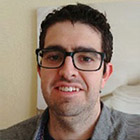SYCL 10th Anniversary
02 July 2025
SYCL is an open, standards-based abstraction layer that empowers developers to take advantage of diverse hardware architectures. Whether CPUs, GPUs, FPGAs or new and innovative AI accelerators, developers can write their application with SYCL and run it simultaneously across their hardware without the need for long, complex porting efforts and the maintenance of multiple software stacks. It’s implemented using C++ and designed with ease-of-use in mind; the Khronos Group maintains the SYCL specification and invites the industry to collaborate on its direction through the SYCL Working Group.
As the demands for data centric computing and AI applications continue to evolve, the need for compatible software has never been clearer. When hardware is diverse, with many different architectures from different vendors, developers need to be free to innovate and focus on their applications rather than on code compatibility and porting. It’s the goal of SYCL to provide this freedom, and at Codeplay, we’ve been working with SYCL since the start.
Codeplay Software began as a video game tools company - pioneering the idea of enabling complex software to run on graphics processors. In the early days, this was about more exciting videogame graphics, but developers started using these tools for AI (initially, AI in videogames) and scientific applications.
We’ve made a lot of progress since those early days, and we thought we’d take the time to reflect on what is now a decade of SYCL.


Andrew Richards, Codeplay CEO and co-founder
We have come so far since the early days of SYCL! Before SYCL, there had been a lot of work to write high-performance code by videogame developers, who have to support a variety of different hardware, including GPUs. A common technique was to use some of the advanced features of C++ to let developers write software that is both very high performance and very complex. We wanted to bring that experience to a wider range of software developers, but we had no idea what they would do with this ability to enable high performance combined with huge complexity. The answer was both new advances in science and incredible steps forward in artificial intelligence. The importance of C++ to delivering new AI technologies is often underplayed, but look under the hood and you’ll see everything is built on those well-proven foundations. I’m very excited about the future of SYCL, because we worked so hard to enable innovators to unleash their imaginations to build the revolutionary technologies of the future.

Ruymen Reyes, Codeplay CTO
When we embarked on the idea of building a high level interface for OpenCL that would make it easier for developers, our goal was to make developers more productive. It is amazing to see how that relatively shy goal has become so important over time as more and more code and complex applications end up being accelerated on GPUs and other platforms. I am pleased to see the wide adoption that SYCL has and how it remains a vendor neutral standard that can be used for NVIDIA, Intel or AMD platforms - enabling developers freedom of choice.


Gordon Brown, Codeplay Software Architect
SYCL began with the modest goal of creating a high-level programming model for OpenCL to make it easier for programmers to develop heterogeneous applications. It’s incredible to see how far it has come—now supporting a wide range of hardware platforms and being used across diverse domains, from automotive and medicine to high-performance computing and AI.
I first started working with SYCL back in 2012, when it was still called the High-Level Model (HLM) for OpenCL, working on the original prototype, developed by Andrew Richards and Uwe Dolinsky, based on Codeplay’s Offload compiler technology. It’s been quite a journey—from crowding around a whiteboard designing the APIs, staying up into the early hours in a hotel writing the first specification, and experiencing the excitement of the first ratification vote, to traveling to conferences and conventions to teach people about SYCL and encourage them to try it. So many people have contributed to SYCL over the years, each bringing their own ideas and unique perspectives, helping shape it into what it is today.
The future of SYCL is incredibly promising. With multiple open-source implementations and growing adoption across various industries, the ecosystem is expanding rapidly. Exciting new vendor and Khronos extensions are in the pipeline, introducing powerful features and making it even easier to develop productive, performant applications that run across a wide range of heterogeneous platforms.

Uwe Dolinski, Codeplay Chief Scientist
I remember the pre-SYCL days when we built C++ tools to take advantage of emerging new parallel hardware that was challenging to program with existing tools. We adapted compiler and runtime technologies we developed for Playstation 3 to create OffloadCL, a first SYCL-like prototype that provided acceleration via OpenCL and shaped the initial SYCL standardization process. We then made ComputeCpp the first conforming tool chain, and SYCL now has open-source implementations such as DPC++. An especially exciting SYCL project for me was accelerating complex models in commercial battery management systems used in electric cars. We also targeted SYCL to FPGAs and more recently to cpus including x86, Aarch64 and RISC-V, with public CI documenting the support status. From its early days SYCL has expanded a lot and continues to take advantage of the most recent hardware and apis (including NVidia’s) for performance. SYCL SC has been created due to the demand to target safety-critical systems. SYCL support in core LLVM is growing steadily.

Rod Burns, Codeplay VP Ecosystem
When I joined Codeplay nearly 9 years ago very few GPU supercomputers were in the top500 list and heterogeneous programming with GPUs was a new concept. This meant that SYCL was at the cutting edge of bringing the next level of performance to HPC software. Through the years I have been privileged to be part of a growing community of software developers using SYCL, with many of these helping to accelerate results in a wide range of areas, in particular those accelerating crucial research into disease prevention and treatment through the Exascale Computing Project.
I have been involved in curating the content on https://sycl.tech for most of those 9 years at Codeplay and it’s amazing how much information is available there now, including videos, blogs and more. The most exciting recent addition was the SYCL playground, where it is possible to learn and write SYCL code in a web browser.
We’ve chosen a few highlights from Codeplay over the years, and we’re looking forward to the next ten!
- We first presented SYCL at SC16 and SC17
- ComputeCpp became a conformant SYCL 1.2.1 implementation in 2018
- SYCL Academy was created in 2017 and now used across the world
- Codeplay announced a partnership with NERSC for the Perlmutter supercomputer using SYCL
- Codeplay announced the release of the plugins for Nvidia and AMD with the DPC++ compiler
